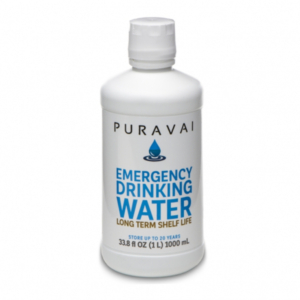SOS: 5 Mistakes to Avoid in Emergency Water Storage
In emergency preparedness, few considerations are as pivotal as water storage. Water is a fundamental necessity for human survival, and as such, having a dependable supply during times of crisis should be non-negotiable. Today we will look at five pivotal mistakes that individuals commonly make when it comes to emergency water storage.
Mistake #1: Neglecting Water Quantity
The human body is highly dependent on water, with the average person requiring a substantial daily intake for hydration and basic physiological functions. In emergency situations, you may need to plan for more water consumption due to increased physical activity, stress, or extreme temperatures.
Therefore, it’s a good practice to store at least one gallon (about 3.8 liters) of water per person per day for a minimum of three days in your emergency water supply. This accounts for your drinking needs (2 liters), cooking (1 liter), and limited hygiene needs (the rest).
Consider your household, whether there be anyone requiring increased water needs, and of course also consider your beloved household pets if you have them.
Mistake #2: Choosing Improper Containers
The integrity of water storage containers is important in maintaining water quality. Unsuitable materials can lead to chemical leaching or the penetration of contaminants, rendering stored water unsafe for consumption.
Be sure to discern the appropriate materials for long-term water storage and to avoid those materials that may compromise water quality. For example, you do not want to store water in old used chemical containers from the local car wash. Make sure you are using food grade plastic BPA free containers. Proper water storage container suggestions and ideas can be found here.
Mistake #3: Skipping Water Treatment
Water treatment, often-overlooked stands as the third critical mistake to avoid. Simply storing water is insufficient; one must also ensure its purity and safety. Neglecting water treatment methods can result in microbial contamination and waterborne diseases.
As such, individuals must familiarize themselves with proper water purification and treatment techniques, ensuring potable water. A simple water purification tablet can be quite helpful in many emergency situations. For longer term water requirements, there are also multiple options to filter your water.
Mistake #4: Storing Water in Inadequate Locations
The fourth error in emergency water storage pertains to the selection of inadequate storage locations. Placing water containers in suboptimal environments exposes stored water to contaminates and can compromise the integrity of the water supply. It is suggested NOT to store water in direct sunlight, next to chemicals or contaminants, in unsanitary conditions, or directly on concrete floors (best raised on a pallet or box). The chemicals in the floor can transfer through to your water storage if you store a water container directly on a cement floor.
Mistake #5: Failing to Rotate Water Supplies
The fifth mistake is the failure to rotate water supplies. It is suggested that:
- Commercially Bottled Water: Sealed, commercially bottled water typically has a 1 – 2 year shelf life if stored in a cool, dark, and dry place away from direct sunlight and extreme temperatures. However, it is good practice to check the expiration date on the bottles.
- Tap Water: If you’re storing tap water in clean, food-grade containers, it can be stored for about 12- 18 months without significant degradation in quality, assuming it has been properly treated and stored in a sanitary manner. It’s ideal to rotate stored tap water every 6 months to ensure freshness.
- Filtered or Purified Water: Water that has been filtered or purified using methods such as reverse osmosis or distillation can have a longer shelf life often up to 2 years or more, when stored correctly.
Water Rotation Pro-Tip: To ensure the freshness and quality of stored water, consider a rotation schedule that’s easy to remember. Add this task into the calendar beside something that happens yearly. May I suggest connecting it with something like your mom’s birthday or maybe Halloween. Use and replace stored water every 6 months to 1 year, even if it has been properly stored, then you can feel at peace that your water is still fresh and ready for use in the case of an emergency.
In conclusion, water is undeniably the elixir of life, even more so in times of crisis. Therefore, I’d ask everyone to be vigilant in their emergency preparedness endeavors by avoiding these five water mistakes. Neglecting water quantity, choosing improper containers, skipping water treatment, storing water in inadequate locations, and failing to rotate water supplies are errors that can add unfortunate stress to your situation when that’s the exact opposite of what you need.




